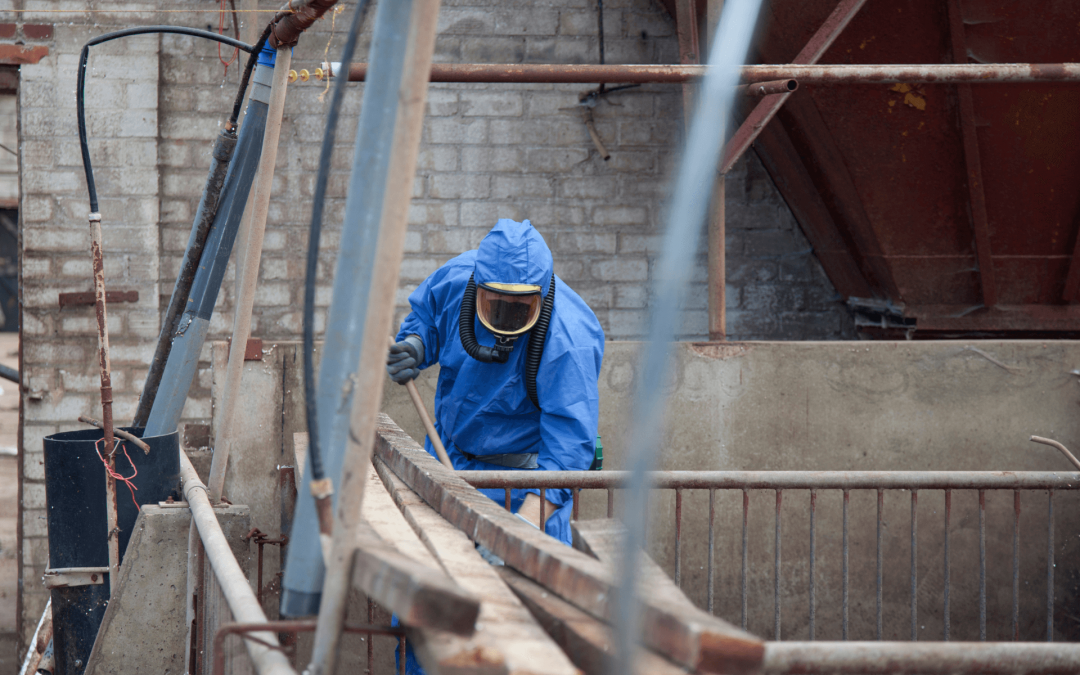Asbestos is deadly. Statistics show that the building material kills an estimated 4,000 Australians annually. As such, property owners regularly hire teams of professionals to survey their properties and provide extensive reports on any asbestos-containing building materials they contain.
Unfortunately, conventional call-outs aren’t always budget-friendly. Property owners must pay hefty call-out fees and writing-up charges.
Because of this, more people are using asbestos testing kits in their homes. These DIY solutions reduce costs significantly while providing accurate assessments of asbestos levels in building materials.
When Does Asbestos Become A Problem?
Asbestos in building materials is usually inert. Most of the time, the dangerous fibres that cause cancer remain bound inside the material, preventing them from escaping.
However, the danger comes during building and renovation work. Breaking asbestos-containing materials causes them to release microscopic particles that later become lodged in the lungs, leading to the health problems described below.
Unfortunately, most homeowners are unaware of the presence of asbestos in their homes. Many believe regulations protect them from harm, but that’s not necessarily the case. While Australia banned asbestos-containing products in construction projects in 2003, the material is still present in many properties built before that date, particularly in the 1990s.
What Problems Does Asbestos Cause?
Asbestos can cause numerous problems if present in the home. Exposure to stray fibres can cause a host of diseases as time passes.
For example, many people exposed to asbestos develop asbestosis. This chronic lung condition results from breathing in the substance as it travels through the atmosphere. Symptoms include coughing, trouble breathing, and chest pain.
Unfortunately, individuals with asbestosis are more likely to develop lung cancer, with those with the longest histories of exposure at the highest risk. Furthermore, some patients develop mesothelioma, a cancer that affects the lining of the heart, lungs, and abdomen with a poor prognosis.
Other health conditions associated with asbestos exposure include:
- A buildup of fluid between the lungs and the chest walls that causes breathing difficulties and chest pain
- Stomach issues, including an increased risk of colorectal cancer
- A thickening on the lung lining, reducing function
Fortunately, identifying the presence of asbestos before renovations can prevent it from spewing into the air. But first, you need to test for it.
What Is An Asbestos Testing Kit?
An asbestos testing kit is a tool to collect suspected asbestos samples that you later send to a lab. Products contain various elements designed to protect you from harm while helping you gather a suitable sample. For example, kits include personal protective equipment, such as gloves, safety glasses, and respirators to avoid disturbed asbestos fibres from contacting your skin or lung tissue. You also get various instruments for safe sampling, such as scalpels, swabs and sealed containers, ready for analysis.
About The House’s testing kits come with analysis as standard. That means when you buy the kit, the lab testing is included.
How Our DIY Asbestos Testing Works
Our DIY asbestos testing process is simple.
- Start by ordering an at-home testing kit from us today. Then, follow the instructions when collecting the sample. Ensure you put on personal protective equipment to stop any dangerous fibres from coming into contact with your body.
- Collect the sample using the tools provided and place it into a clip-lock sealed bag. The specimen should be thumbnail-sized.
- Write your contact name on the bag.
- Fill out the form on our website, ensuring that your name matches.
- Drop off the sample at our Kariong Office. (You can leave it outside in the collection box).
Once you complete this process, we will carry out the analysis. Our team uses advanced technologies, such as polarised light microscopy, to identify the presence of asbestos in materials. This technique helps technicians identify the tell-tale optical properties of the substance, including changes in brightness with rotation. Team members can also use additional confirmation techniques, including electron microscopy, to better characterise fibres.
Once we have the results, technicians compile them into a report with information such as the asbestos identification technique, the identification of the person carrying out the test, and a comparison to standards and regulations.
Get Your Testing Kit
So, what are you waiting for? If you think you have asbestos problems in your home, call our team and arrange a DIY testing kit. We’ve removed over 10,000 tonnes of asbestos from properties across Australia.
